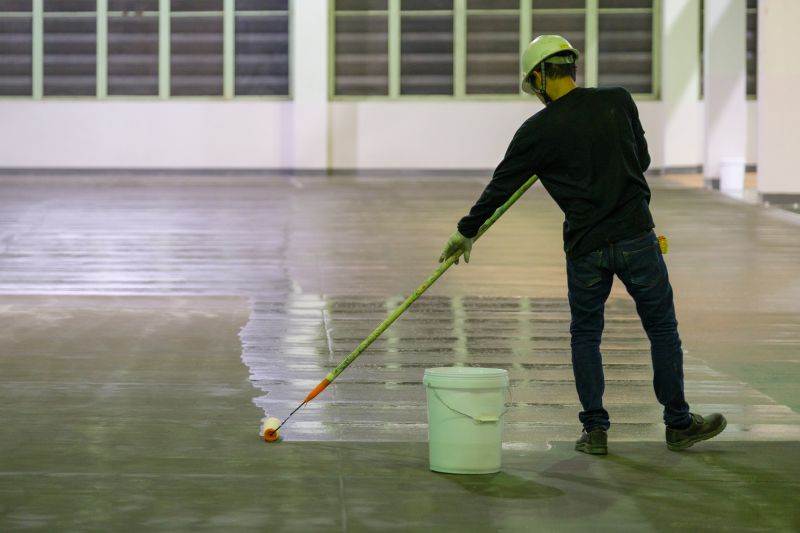Leading Solutions For Epoxy Floor Repair You Can Rely On
Find high-quality repair products that provide strength, adhesion, and a flawless finish for all epoxy flooring needs.
 Epoxy floor repairs are essential for maintaining the integrity and appearance of concrete surfaces in various settings, including garages, basements, commercial spaces, and industrial facilities. When addressing damaged or worn epoxy floors, selecting the right products can ensure a durable and seamless repair. These repair solutions range from simple patching compounds to comprehensive kits designed for larger areas, providing options suitable for both minor touch-ups and extensive restoration projects.
Epoxy floor repairs are essential for maintaining the integrity and appearance of concrete surfaces in various settings, including garages, basements, commercial spaces, and industrial facilities. When addressing damaged or worn epoxy floors, selecting the right products can ensure a durable and seamless repair. These repair solutions range from simple patching compounds to comprehensive kits designed for larger areas, providing options suitable for both minor touch-ups and extensive restoration projects.
Top Overall Option
Multi-Purpose Epoxy Floor Repair Kit
A comprehensive repair kit designed to address a variety of epoxy floor issues, including cracks, chips, and surface imperfections. It typically includes epoxy compounds, primers, fillers, and tools for easy application. Suitable for both small repairs and larger restoration projects, it offers a versatile solution for maintaining epoxy surfaces with user-friendly instructions and durable results.
Types of Products For Epoxy Floor Repairs
Epoxy Crack Filler
Specialized compounds formulated to fill and seal cracks in epoxy floors, preventing further damage and moisture intrusion.
Epoxy Patch Compound
Ready-to-use compounds designed to repair larger surface imperfections, chips, and gouges in epoxy coatings.
Self-Leveling Epoxy
Flowing epoxy formulations that create smooth, flat surfaces ideal for repairing uneven or damaged floors.
Epoxy Primer
Primers that enhance adhesion of repair materials to existing epoxy surfaces, ensuring a strong bond.
Epoxy Sealant
Protective sealants that add a glossy or matte finish while safeguarding repairs from stains and chemicals.
Concrete Patch
Universal patching compounds suitable for repairing concrete substrates before applying epoxy coatings.
Epoxy Floor Paint
Coatings used to refresh or upgrade the appearance of repaired epoxy floors with color and texture options.
Chemical Resistant Epoxy
Formulations designed to withstand exposure to harsh chemicals, ideal for industrial environments.
Epoxy Adhesive
Strong bonding agents for securing loose tiles or repairing structural damages in epoxy floors.
Epoxy Floor Repair Kit
All-in-one kits that include multiple repair components and tools for comprehensive floor restoration.
Popular Choices
A widely used solution for filling cracks and minor surface damages in epoxy floors, offering ease of application.
Favored for creating smooth, even surfaces over damaged or uneven epoxy floors.
Popular for repairing larger gouges and surface imperfections in commercial or industrial settings.
Preferred for quick repairs that require minimal downtime, suitable for small cracks and chips.
A trending choice for floors exposed to chemicals, oils, and stains in industrial environments.
All-in-one solutions that are popular among DIY homeowners for restoring damaged epoxy floors.
Commonly used for repairing concrete substrates before applying epoxy coatings or overlays.
A preferred option for sealing and protecting repaired areas from future damage and wear.
Versatile fillers used for various surface repairs in epoxy flooring projects.
Popular for ensuring good adhesion between old and new epoxy layers during repairs.
The process of repairing epoxy floors involves assessing the extent of damage, preparing the surface properly, and applying the appropriate repair material. Surface preparation is crucial and often includes cleaning, etching, or sanding to ensure proper adhesion. The repair products themselves are formulated to bond well with existing epoxy coatings, resist chemicals, and withstand foot and vehicle traffic. Proper application and curing are vital for achieving a smooth, long-lasting finish.
In addition to repair compounds, there are also filler products for cracks and chips, primers to enhance adhesion, and sealers to protect the repaired area from future damage. Many repair products are designed to be user-friendly, enabling DIY enthusiasts to perform effective repairs without specialized equipment. For larger or more complex repairs, professional-grade materials may be recommended to ensure structural stability and aesthetic quality.
Choosing the right product depends on several factors, including the size of the repair, the type of damage, and the specific conditions of the floor environment. High-quality repair products can help restore the functionality and appearance of epoxy floors, extending their lifespan and maintaining safety standards. When selecting repair solutions, consider compatibility with existing coatings, ease of use, drying time, and resistance properties to chemicals, stains, and wear.
Key Buying Considerations
- Determine the extent and type of damage to select appropriate repair products.
- Check compatibility of repair materials with existing epoxy coatings to ensure proper bonding.
- Consider the size of the repair area to decide between small patch kits or professional-grade solutions.
- Evaluate the curing time to fit repair schedules and project timelines.
- Look for products with chemical and stain resistance suitable for your environment.
- Assess ease of application, especially if undertaking DIY repairs, to ensure proper handling and finishing.
- Review drying and curing conditions to avoid issues like bubbling or improper adhesion.
- Choose repair products that match the color or finish of the existing floor for aesthetic consistency.
- Consider the durability and wear resistance needed based on foot or vehicle traffic levels.
- Verify if primers or sealants are recommended or required for optimal results.
- Examine user reviews and ratings for insights into product performance and ease of use.
- Check for safety instructions and proper handling procedures to ensure safe application.
- Determine if the product includes necessary tools or if additional equipment is needed.
- Review warranty or satisfaction guarantees offered by the manufacturer.
- Consider budget constraints while balancing the quality and longevity of the repair materials.
This page contains affiliate links. We may earn a commission if you purchase through these links, at no extra cost to you.
